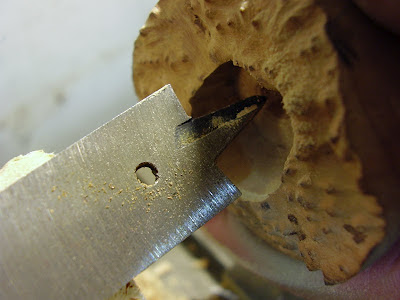My Longman dictionary say the following:
free-hand drawn with your hand and a pen or pencil
Now I suppose the fathers of the English language did not necessarily smoke pipe (if not, they should have!) and that they therefore would not have thought of pipes when deciding on the meaning of this word, but what is a freehand pipe?
Since starting with pipesmoking many moons ago, learning bit by bit and then getting into the making as well, this "shape", if you can call it that, has puzzled me.
If a customer asks for a freehand, I get cold fever, my eyes glaze over and knees buckle,making me frantically grab my whisky glass to go pour another. The thing is, if you ask a hundred pipesmokers, well, you are going to get a hundred and one answers.
For most oldtimers (and even some younger smokers) the above pipe is a freehand. For me the old "danish style" freehand from the 70's. It usually was made from plateaux, normally didn't have any significant grain, with a bit of bark on the the end of the shank and most of the time on the rim as well. It also was quite normal to sport a "fancy" stem with rings and whatnot. Most of the ones I have seen are sandblasted as well.
Then there are the pipe smokers for whom freehand refers to a non-standard shape. These would be more "organic" free flowing forms that might (or might not) follow the grain of the wood. For some smokers even an amorphous raw block with basically just the edges taken away, could be termed a freehand.
Now what does a pipe maker have to do when asked for a freehand? He asks for an idea, a pipe the person related to, a sketch, basically anything that will push him in a direction. That helps.
It also helps if it is a returning customer and you have an inkling of the customer's taste in pipes.
But then the most dreaded of replies also happen. That is when the customer answers: Surprise me. Just make a freehand.







































